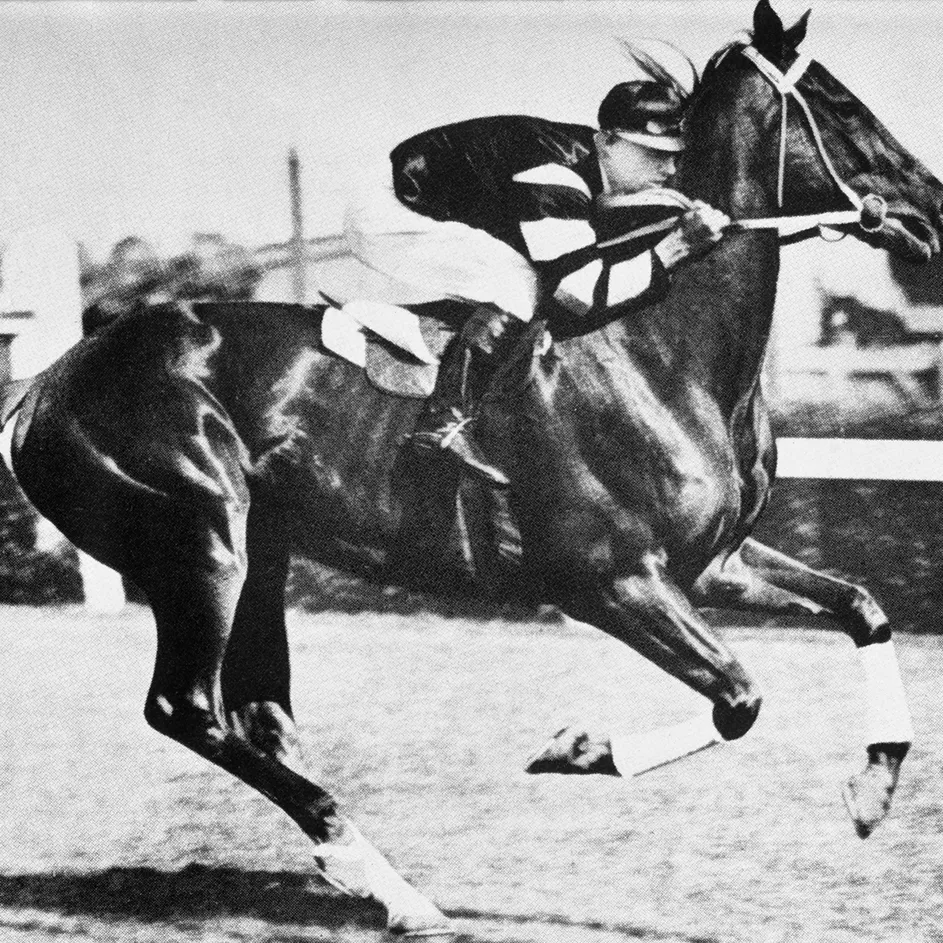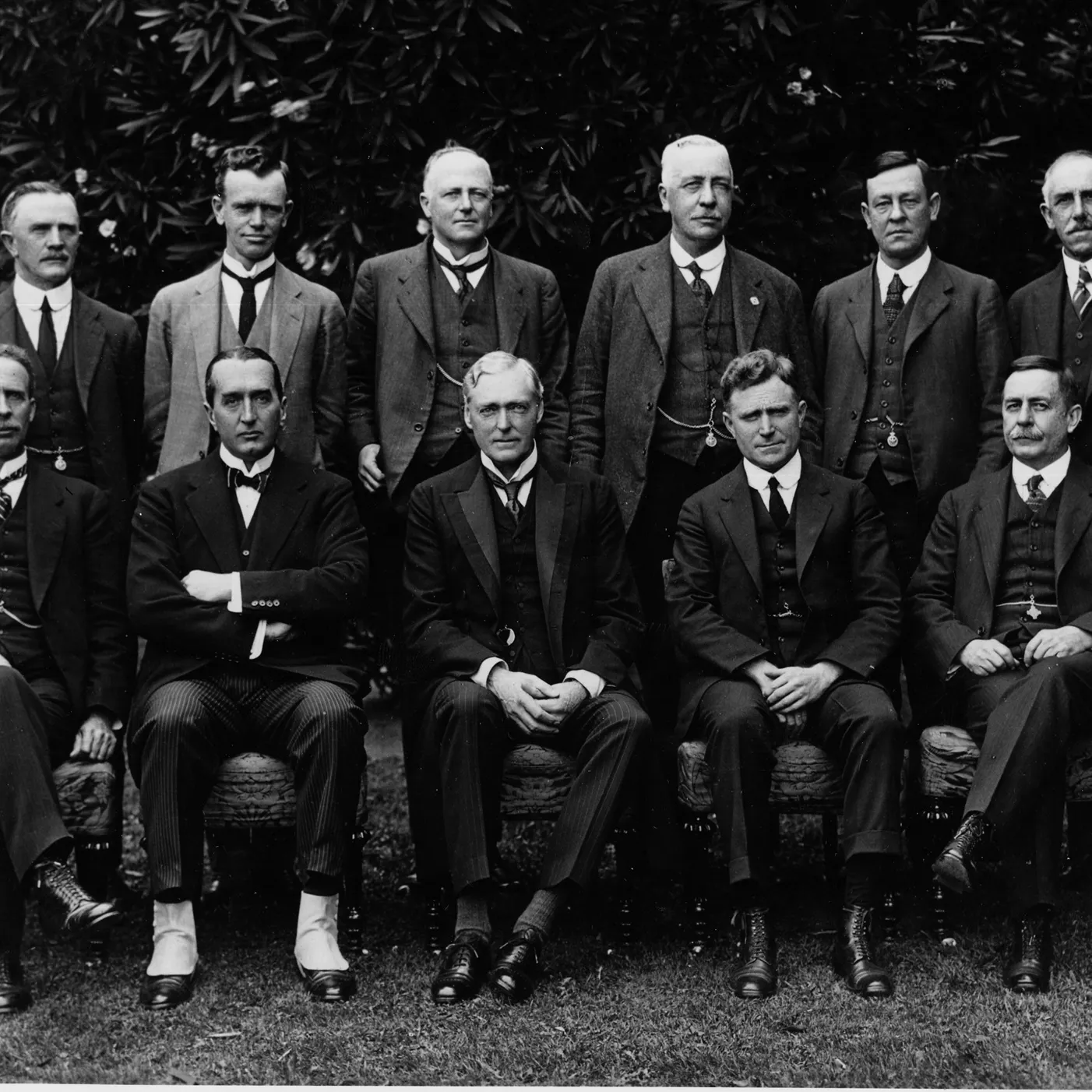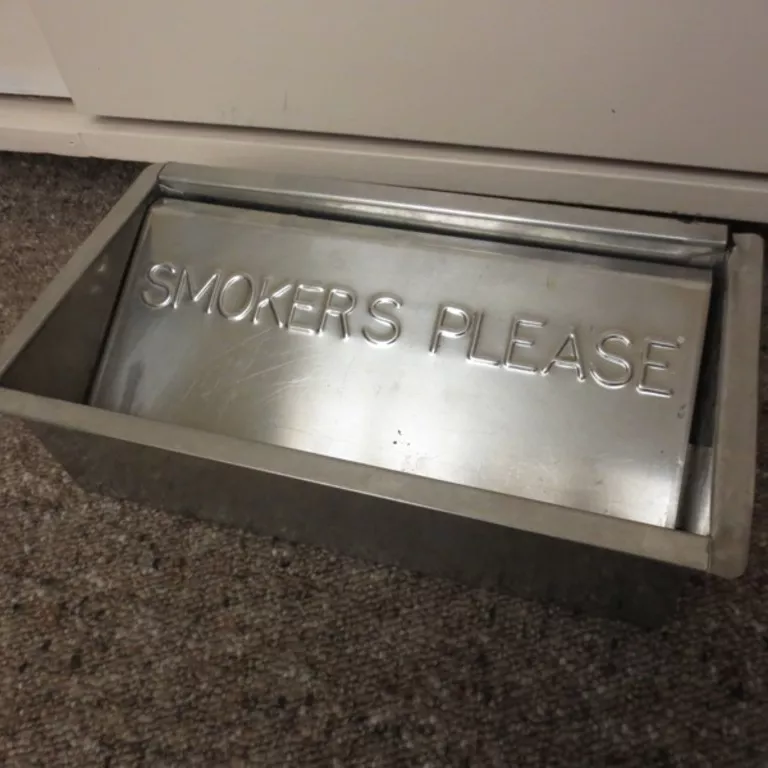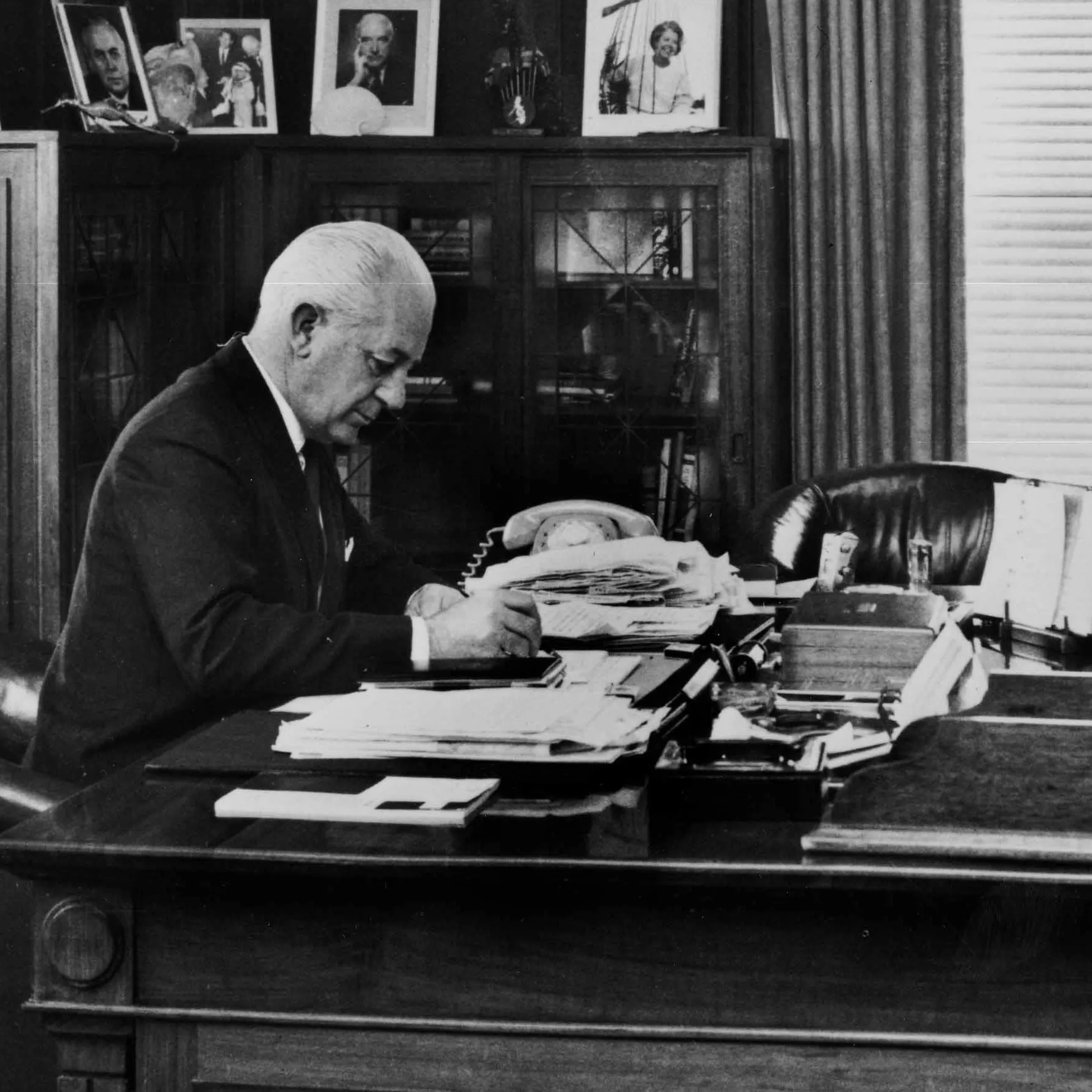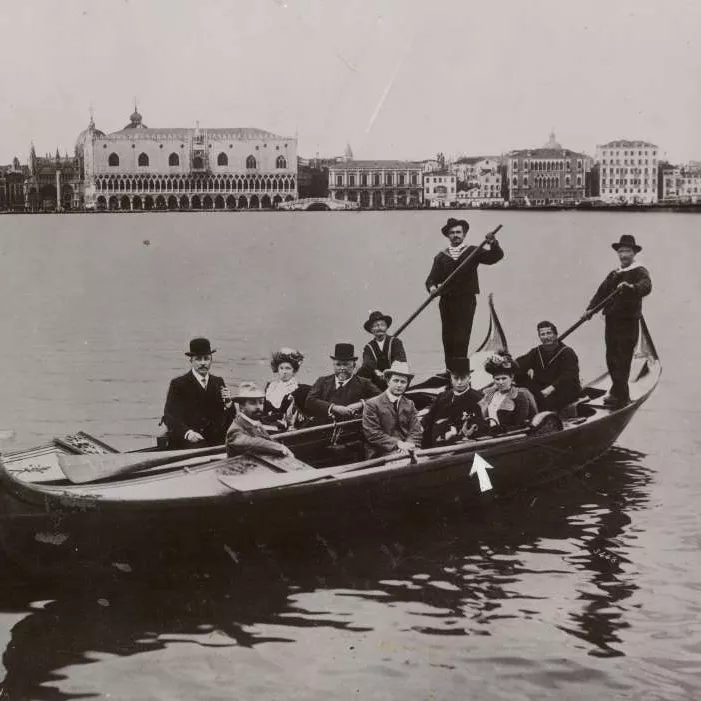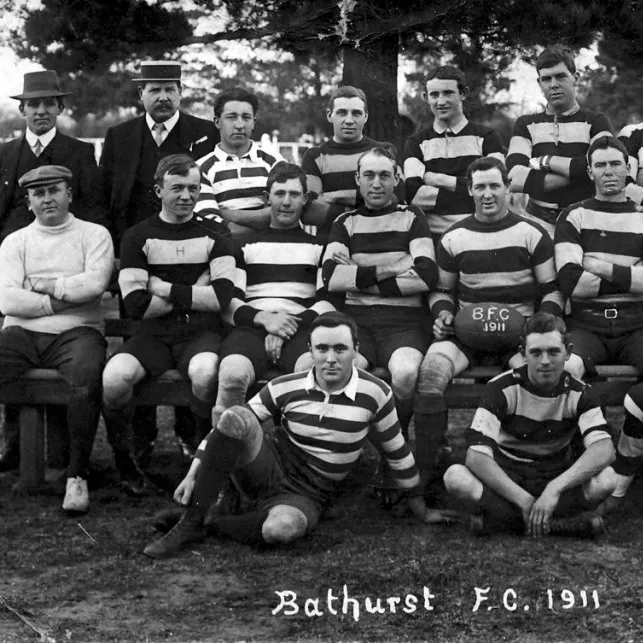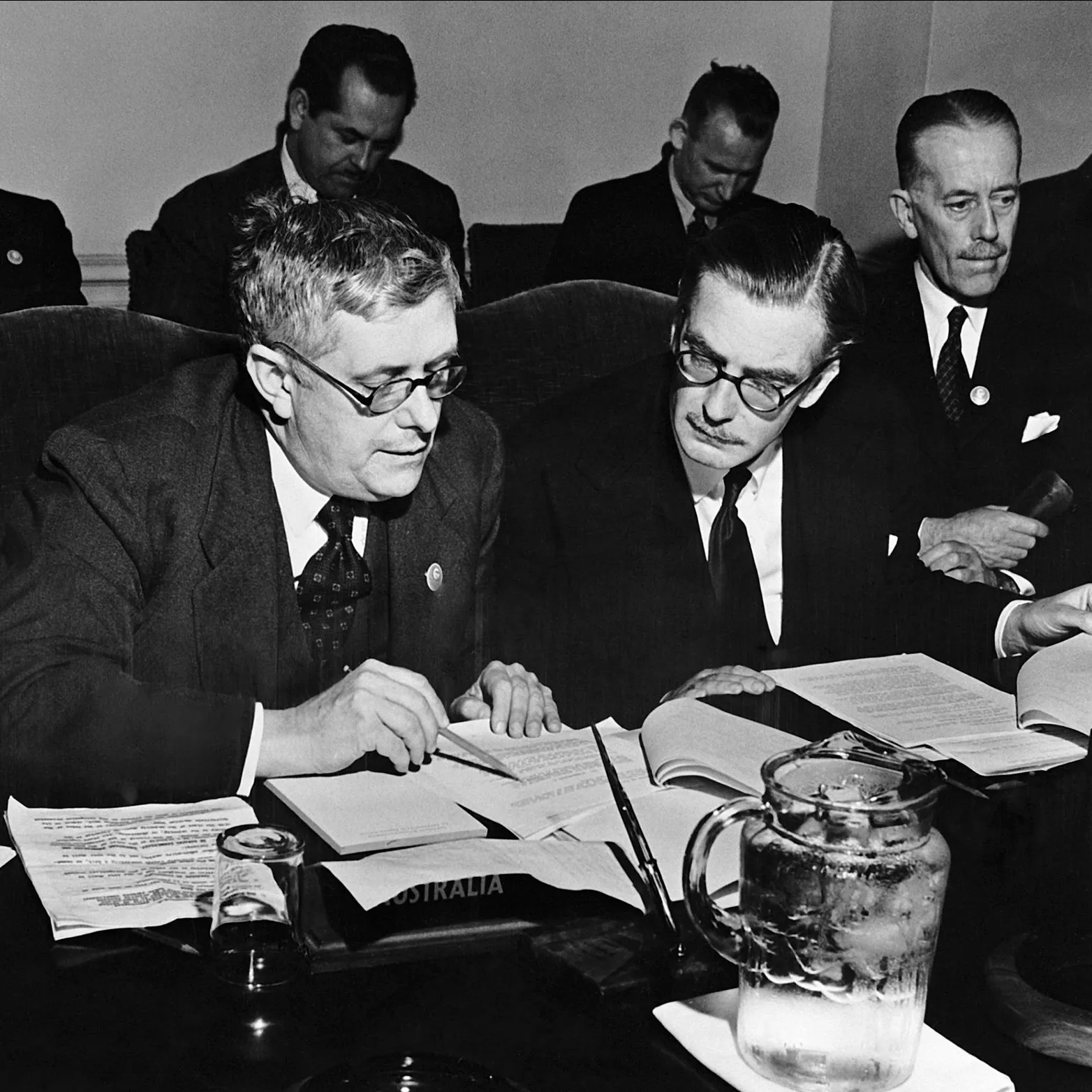Archie Cameron’s war on Phar Lap
- DateMon, 05 Nov 2012
The twelfth Speaker of the House of Representatives, Archie Galbraith Cameron, is renowned for his colourful personality and autocratic, abrasive style of managing the affairs of the House.
Stories of his rows and exploits have become legends in the annals of parliamentary history. Eccentric and disciplinary, Cameron held rigorous standards and was ruthless in making them known and holding his parliamentary colleagues to them.
He didn’t always live up to his own standards. Cameron insisted, for instance, that everyone be properly attired when in the lobbies or public areas of Parliament House (i.e. suits and ties), yet was known to receive visitors to his office dressed only in a singlet and shorts, resting his bare feet on the desk. Sometimes he used to walk around the building like that on weekends, which the cleaning staff resented – they thought he might be mistaken for one of them and give them a bad name! Though he could be charming and had many friends on both sides of politics, he was also abrasive and merciless against those he disliked. When told the Speaker’s wig was once used by Doc Evatt, Cameron remarked:
'It will be the first time there has been any clear, straight thinking under this wig.'
One of Cameron’s more famous obsessions was his strong anti-gambling position. When he became Speaker in 1950, Cameron imposed a strict ban on gambling within the confines of Parliament House. He was utterly merciless in his enforcement of the ban and nobody was spared. In May 1950, Cameron got wind that a card game was in process in the press gallery. Cameron personally climbed over the roof of the building to catch the unfortunate gamblers in the act, bursting through an upper window and ambushing them. That evening, Cameron delivered one of his stern lectures to his parliamentary colleagues on the evils of gambling.
'I do not care whether it is on a game of poker or whether it is betting on horse-racing; it is going to stop.' (Hansard, 25 May 1950)
Perhaps the most unusual story involving Cameron’s anti-gambling crusade concerns his confrontation with the parliamentary barber, Mr. Cecil Bainbrigge. Bainbrigge had been a barber at Parliament House for more than a decade, and was running the barber shop in October 1951 when Cameron came in for a haircut. While in the chair, Cameron noticed that a poster of Phar Lap and Comic Court, featuring photos of the horses and details of their famous races, were adorning the walls of the shop. Cameron, true to form, demanded the poster be taken down. His official explanation was that the poster was not part of the official parliamentary furnishing.
'If we were to give way to one we must give way to everyone and there would be nothing to prevent someone putting pin-up photographs on the walls.' (Sydney Morning Herald, 24 October 1951)
Cameron’s objection to the poster, however, more likely stems from his puritanical opposition to gambling. The poster listed bookmakers odds and, being a racehorse, Phar Lap was part of the racing and gaming industry to which Cameron had such strong objections. So the poster was taken down, much to Bainbrigge’s dismay as he was fond of racehorses. But that wasn’t the end of the story.
A year later, Bainbrigge was unceremoniously given notice to quit his job by the end of 1952, with very little explanation given. News reports at the time said Bainbrigge was given notice by Cameron and by the President of the Senate, Ted Mattner, but none of them really gave any hint as to why. One possible explanation is contained in the pages of Hansard. On 5 November 1952, another member mentioned that Mr. Bainbrigge had been asked to leave 'in connexion with a recent sporting activity', which gives credence to the theory that Bainbrigge was involved in illegal gambling (Hansard, 5 November 1952). The story, which has never been verified, is that Bainbrigge was a starting price bookmaker (an 'SP bookie'); this is unlikely to have endeared him to Cameron.
Rather than be sacked, Bainbrigge simply handed in his notice. His dismissal made the papers, as the press gallery liked to report on Cameron’s eccentric nature. One story, reported in the Sunday Sun on 2 November, reported Bainbrigge was actually considering running against Cameron in his seat of Barker at the next election. Bainbrigge later said that he was joking, and did not run against Cameron.
Cameron died in 1956, still Speaker, after a long career as an MP, minister, briefly leader of the Country Party and one of the most eccentric and colourful people to grace the halls of Old Parliament House.
The Museum of Australian Democracy has acquired the offending Phar Lap poster for its collection, kindly donated by Mr. Bainbrigge’s daughter. Along with the poster is a shaving razor, which family lore has it was used to shave Prime Minister John Curtin the day before his death in 1945. While there is no way to verify this story, the razor and the poster show a glimpse of life 'below stairs' in the Provisional Parliament House in the post-war period.
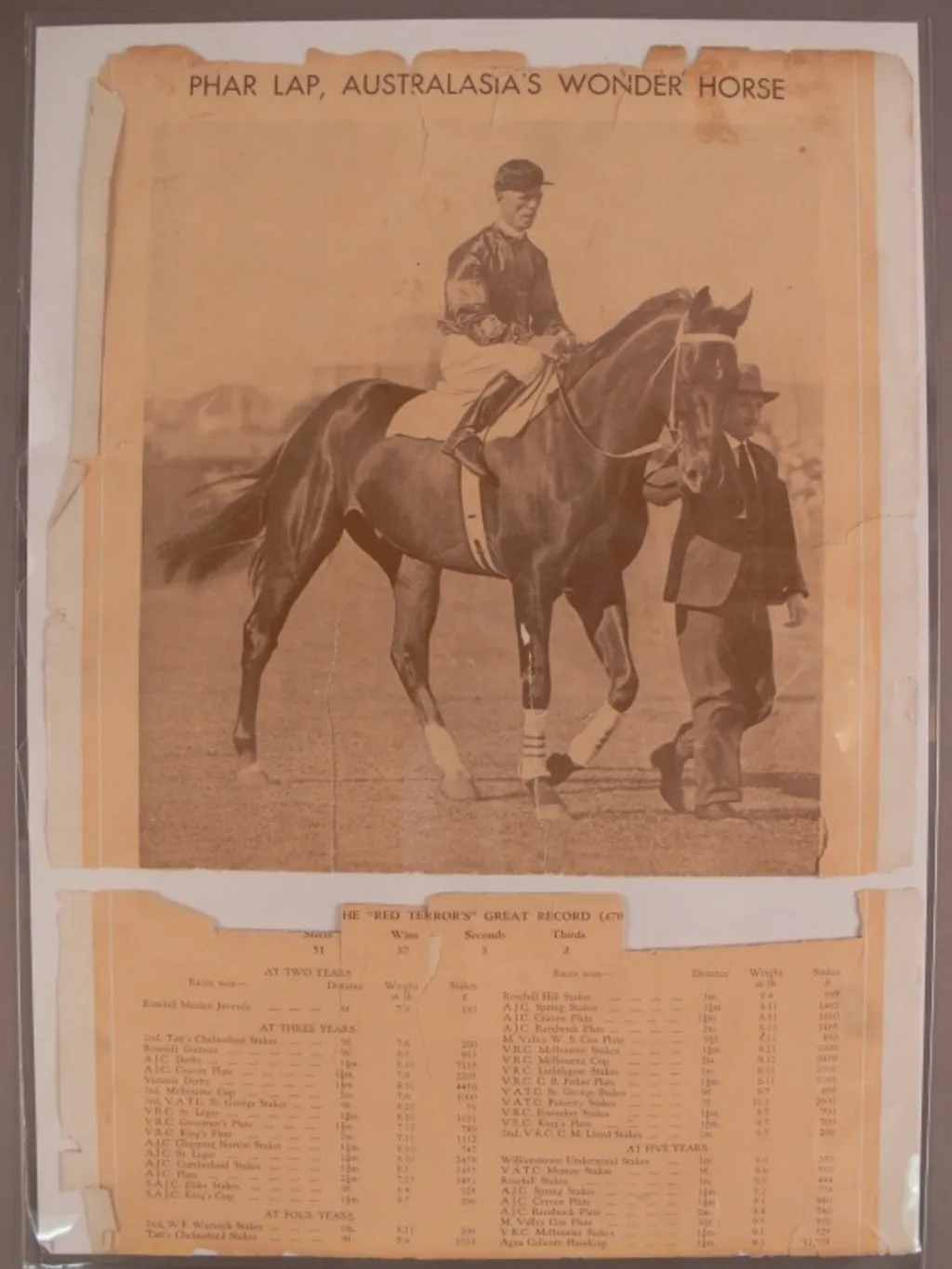
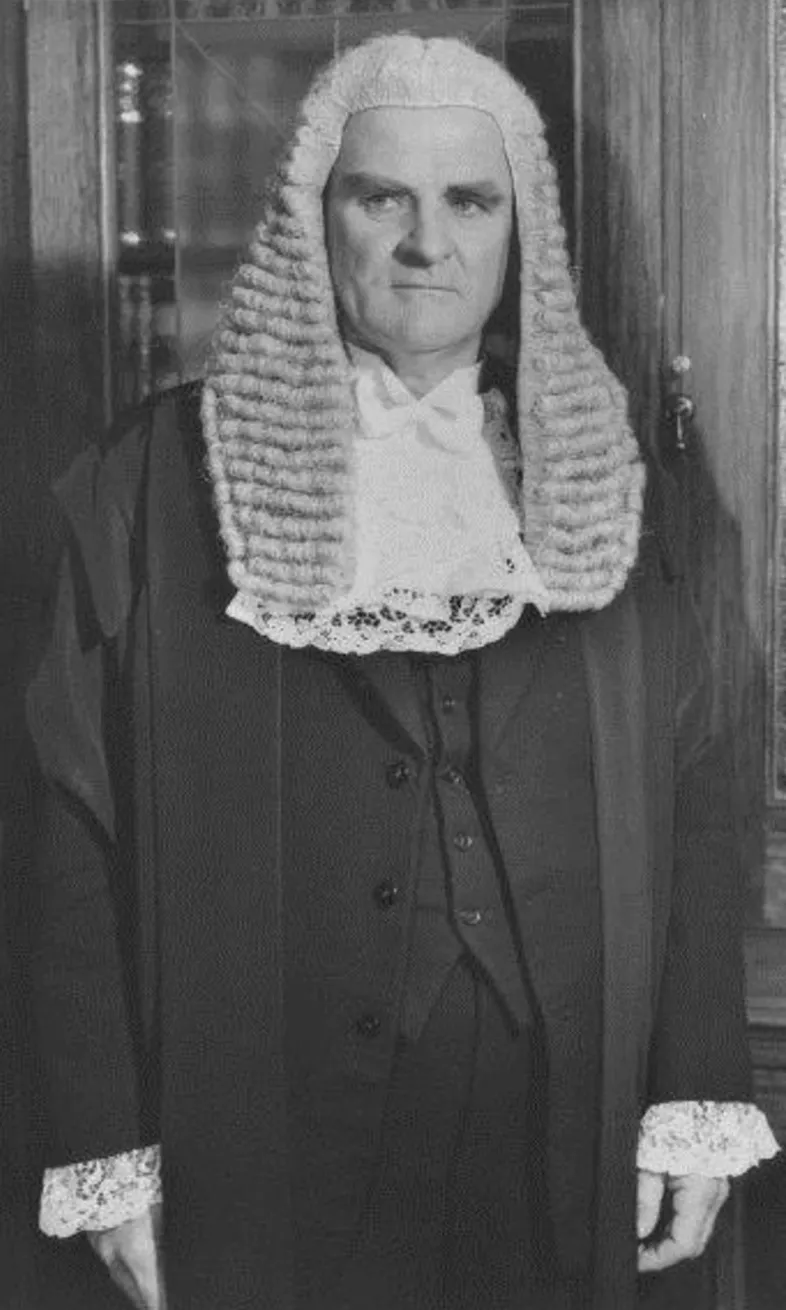
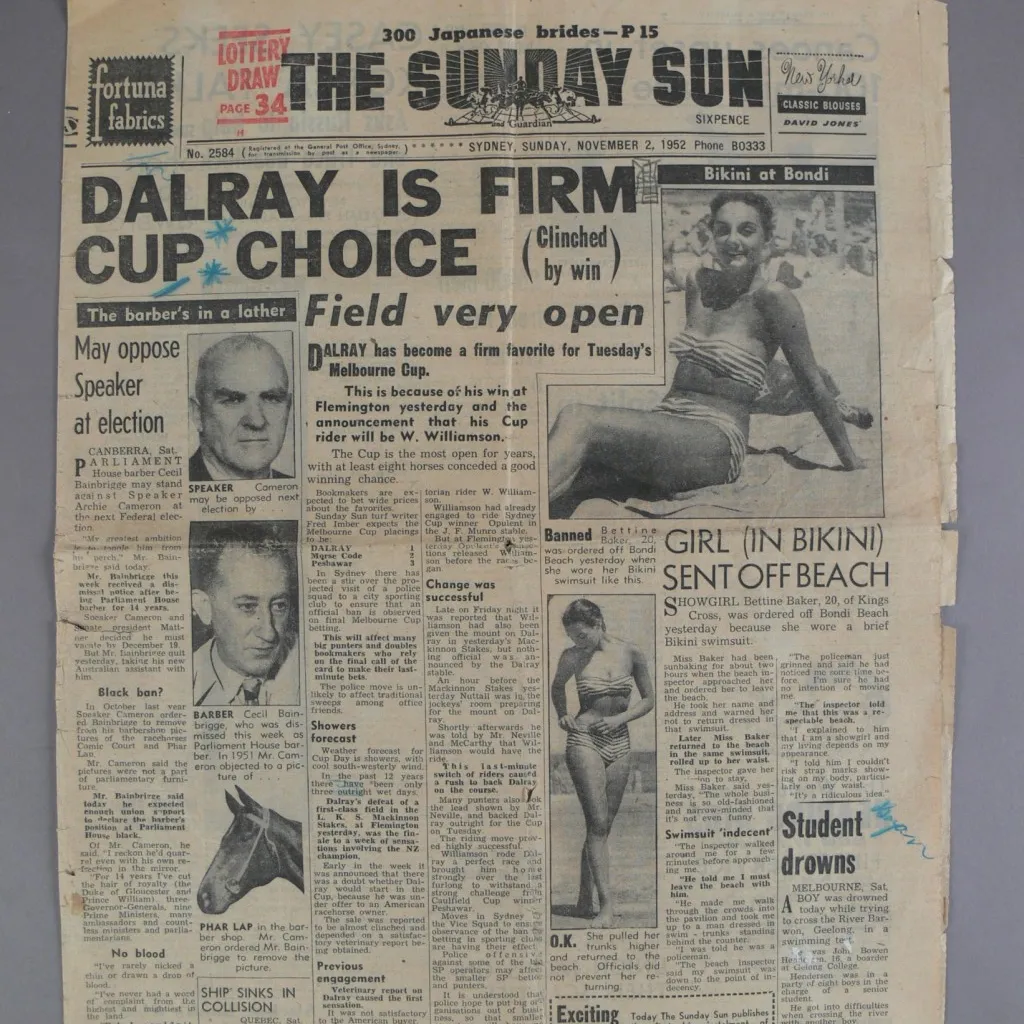
From left, Phar Lap Poster (MoAD collection), Archie Cameron (National Library of Australia), Newspaper article about Mr Bainbrigge's dismission (MoAD collection)

